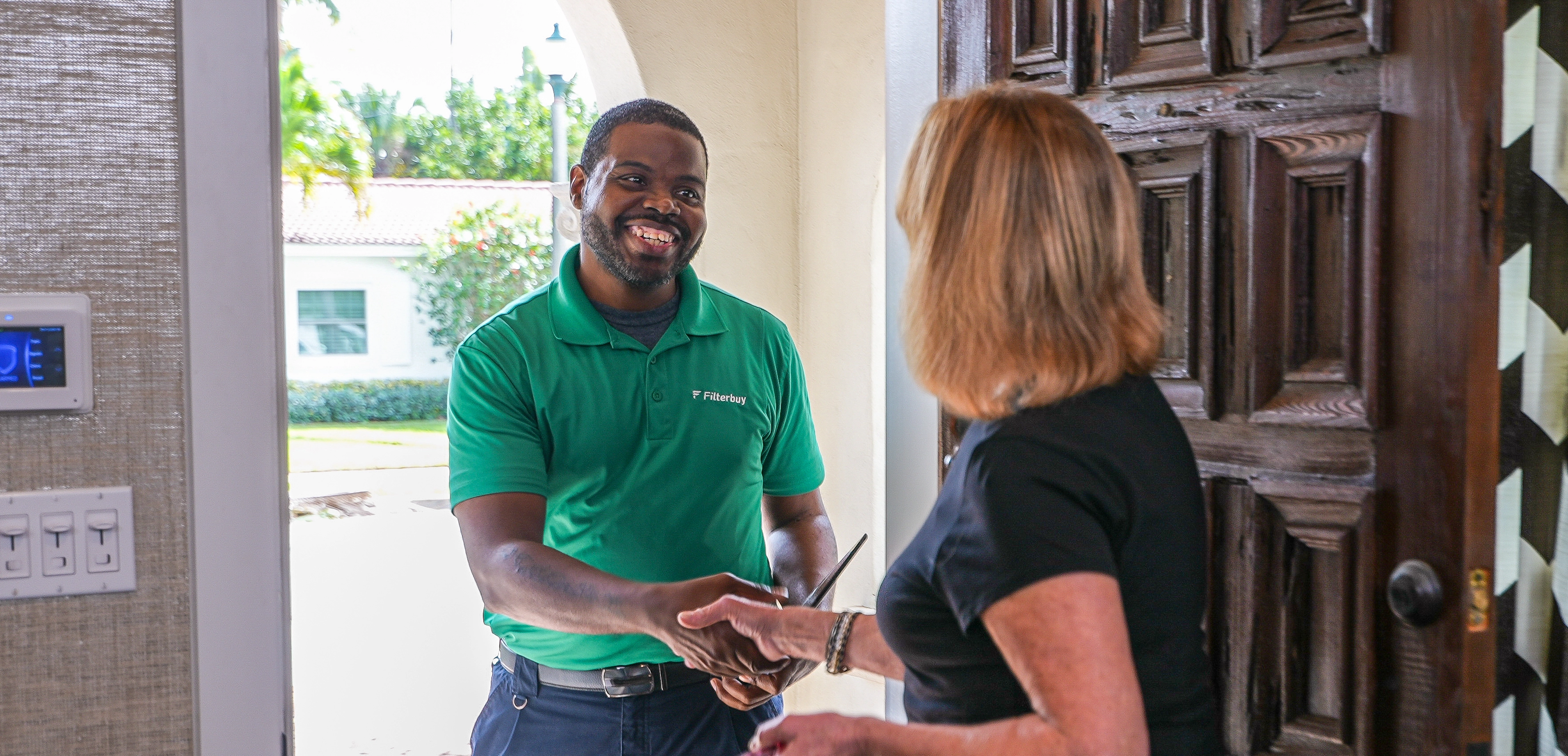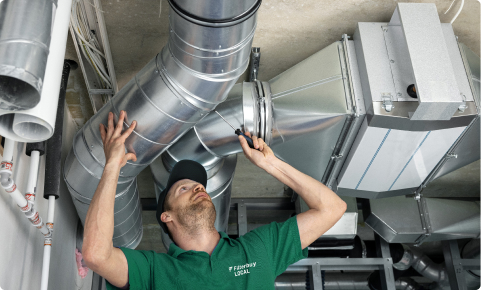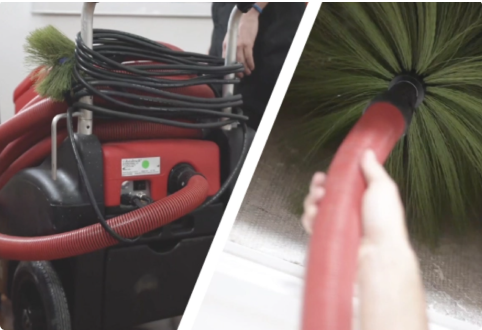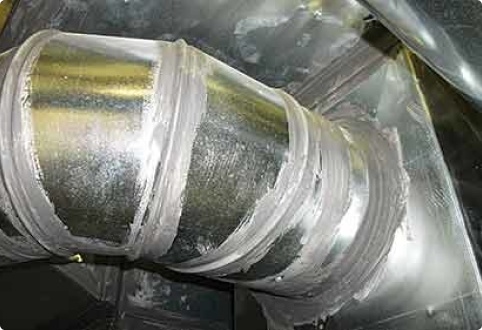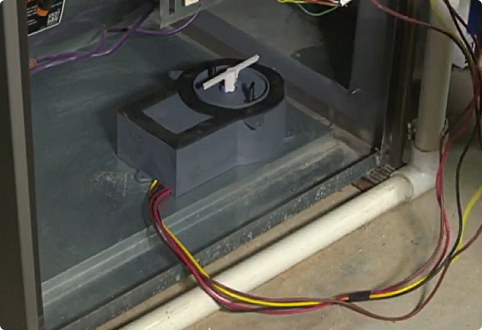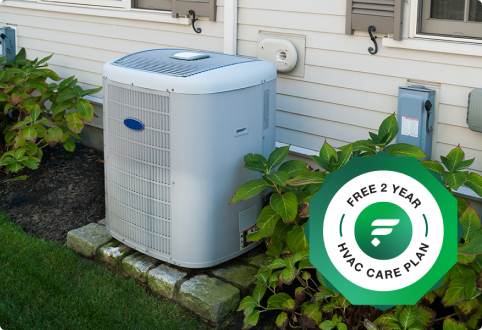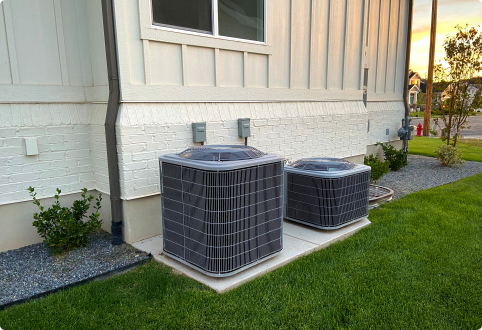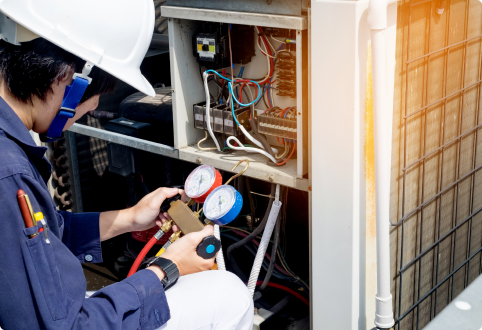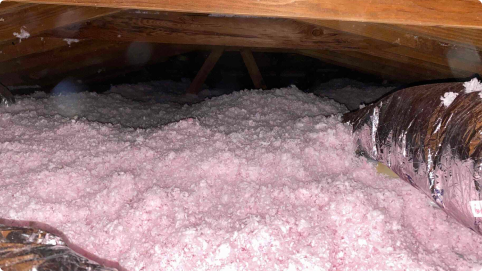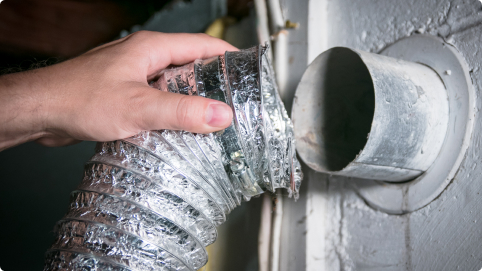Welcome to Filterbuy Local, the best HVAC air ductwork repair service company proudly serving in and near the greater Pinecrest, FL area. Please let us know how we can help solve your Pinecrest HVAC air duct repair needs with professional, affordable, and fast residential and commercial HVAC services by getting a free online quote or by giving our friendly HVAC specialists a call. We look forward to hearing from you!
HVAC Air Ductwork Repair Services Pinecrest FL
Air ducts are an integral part of any HVAC system. They play a vital role in the proper functioning of the system, ensuring that air is being circulated properly and efficiently throughout your home or business. The importance of regularly maintaining and repairing these systems cannot be overstated. This article will provide an overview of HVAC air ductwork repair services in Pinecrest, Florida.
The first section will discuss the various components of an HVAC system and how they interact with each other to ensure efficient operation. It will also explain why regular maintenance and repair are so important for keeping it running at its peak performance levels. The second section will cover what types of services are available through local specialists in Pinecrest, FL, including installation, repairs, cleaning, and replacement parts. Finally, this article will outline some tips on selecting a reliable contractor who can offer high-quality workmanship and customer service while staying within budget constraints.
With all these considerations in mind, readers should have a better understanding of the importance of maintaining their HVAC system’s air ducts as well as the options available when seeking a professional HVAC air duct repair company to help do so in Pinecrest, FL. Through knowledge gained from this article, homeowners and businesses alike can confidently make decisions regarding necessary repairs or replacements for their respective heating, ventilation, and cooling systems anywhere around town.
What Is An HVAC System?
Heating, Ventilation, and Air Conditioning (HVAC) systems are a critical component of modern homes and businesses. The US Department of Energy reports that up to half of all energy used in residential buildings is dedicated to heating and cooling. HVAC systems ensure that temperatures remain comfortable within a given space while also providing clean air circulation.
A typical system consists of two main parts: an outdoor unit containing either an air conditioner or heat pump and an indoor furnace or fan coil unit for circulating heated or cooled air throughout the building. Components such as air ducts, registers, grills, thermostats, filters, and dampers complete the setup by controlling airflow in specific areas. The type of HVAC system chosen will depend on factors such as climate zones, local codes, and regulations, the layout of the existing structure, desired comfort level, and budget considerations.
These components must be regularly maintained to ensure efficient operation and optimal performance. Poorly performing ductwork can lead to increases in energy costs while reducing indoor air quality - both of which have serious impacts on health and safety. With this in mind, it is important to address common issues associated with air ducts so they continue functioning properly over time.
Common Air Ductwork Issues
The air ductwork of residential and commercial HVAC systems can suffer from a variety of issues due to wear and tear, age, or improper installation. Common signs of air duct damage include breaks in the ducts, leaks, disconnected or missing sections, corrosion, clogs, or blockages caused by debris build-up, damaged insulation around the ducts, and poor airflow. Additionally, mold growth is an issue that often affects air ducts due to moisture buildup over time.
A professional inspection of your system’s air ducts should be conducted regularly as part of routine maintenance to ensure its integrity. This will help you identify any potential problems before they become more serious and costly to repair. Professional technicians are trained to spot common types of damage so they can recommend suitable solutions for restoring proper functionality.
Regular inspections should also include cleaning the inside surfaces of the ventilation ducts to remove dirt and dust particles which can accumulate over time and reduce overall efficiency if left unchecked. Taking these simple steps now can save money on energy costs while helping maintain clean indoor air quality.
Indications Of Air Ductwork Damage
As the saying goes, “An ounce of prevention is worth a pound of cure.” This holds for air ductwork repair services in Pinecrest FL as well. Knowing when to look out for signs of damage and addressing them promptly can help avoid costly repairs or replacements down the line. To that end, here are some common indications of air ductwork damage:
The most obvious sign that something may be amiss with your home’s air ducts is a visible hole, crack, tear, or other physical imperfection in the air duct itself. If you notice any sort of visible defect in an exposed portion of your ductwork, then it would behoove you to contact a professional HVAC technician right away. In addition to visual indicators such as these, certain auditory cues could indicate trouble with your home’s air duct network. For instance, if you hear whistling noises coming from within your walls or ceiling when the HVAC system is running at full capacity – this could suggest a breach somewhere along one of the legs of your home’s central heating/cooling systems.
In some cases, however, homeowners may not necessarily recognize any outwardly discernible damages on their own accord; instead, they will notice more subtle changes around their household like higher-than-normal energy bills or poor airflow patterns throughout various rooms in their home. While these symptoms could potentially point towards several different issues beyond just faulty air ductwork, it is still wise to call upon experienced professionals who specialize in HVAC maintenance and repair services so that they can inspect all aspects of your home's heating/cooling apparatus and diagnose what might be causing underlying problems with efficiency levels across multiple areas simultaneously.
By understanding how best to spot potential warning signs associated with compromised air ducts in Florida residences, homeowners can take proactive steps towards avoiding larger-scale issues down the road while ensuring optimal comfortability within their homes year-round. As such, taking heed of any noticeable abnormalities in your residence’s climate control functions should never be overlooked no matter how small they may seem initially; doing so could save time and money over time by preventing further deterioration before it becomes too late. The benefits of repairing or replacing damaged air ducts include improved indoor air quality and cost savings through increased energy efficiency - both topics which will be discussed in detail below.
Benefits Of Repairing Or Replacing Air Ducts
Repairing or replacing air ducts can be beneficial for several reasons. It may improve the efficiency and safety of an HVAC system, reduce energy costs, and increase indoor air quality. Additionally, it may also help to protect against problems like mold growth, blockages due to dust buildup, and pest infestations.
First and foremost, repairing or replacing old air ducts improves the overall efficiency of an HVAC system. This is because damaged ductwork impedes optimal airflow throughout a home or building, reducing the effectiveness of the heating and cooling systems. Replacing worn-out parts with new ones will ensure that the equipment runs more efficiently than before. As such, this not only saves energy but also reduces monthly utility bills over time.
Moreover, repairing or replacing air ducts helps maintain good indoor air quality since these components are responsible for removing airborne pollutants from residential spaces. If left unchecked, contaminants such as pollen and pet dander can accumulate inside them over time causing them to become clogged up which in turn decreases air flow in homes. Replacing any old parts that have been compromised by wear and tear or other damage ensures maximum filtration capacity to keep clean air circulating throughout living areas.
Finally, preventing issues such as mold growth becomes easier when regularly inspecting and servicing your HVAC system's ductwork. Water accumulation within poorly maintained vents leads to microbial contamination resulting in potential health risks for those who inhabit affected premises so having repairs done immediately is essential especially if signs of water damage are present on surfaces near where they run through walls ceilings etc. The next section discusses professional inspection and testing to detect underlying issues that could lead to costly repairs down the road if ignored.
Professional Inspection And Testing
Professional inspection and testing of HVAC air ductwork systems are essential for ensuring a safe and effective system. This process entails an in-depth review to identify any potential issues, from clogged filters to damaged insulation or excessive leakage. Additionally, comprehensive diagnostic tests are conducted to measure pressure, velocity, temperature, humidity levels, and other factors that affect the overall performance of an HVAC system. Lastly, safety checks are performed on all components of the unit to ensure proper functioning.
The professional inspection and testing process also allows technicians to detect common problems such as poor airflow, inadequate heating or cooling output due to restricted airflow pathways caused by improper installation, or faulty connections between registers and grilles. In addition to identifying existing issues, they can help determine if repairs should be made before installation or after OSHA standards have been met.
This thorough evaluation provides insight into how well the air duct system functions while helping owners make informed decisions about their current and future needs. Furthermore, it helps establish a baseline for future maintenance and repair requirements which reduces the possibility of costly breakdowns down the road. The next step is exploring different types of repairs available for resolving these concerns.
Types Of Air Ductwork Repairs
HVAC air ductwork repair services can vary in complexity. These repairs range from simple maintenance tasks to more complicated installations that require expertise and precision. Common types of air ductwork repairs include:
* Replacing damaged or leaky components such as seals, gaskets, insulation, filters, and blower motors.
* Cleaning the interior surfaces of the system to remove accumulated dirt, dust, debris, and other contaminants.
* Adjusting existing systems to improve efficiency or reduce noise levels.
In some cases, additional components may be needed for installation or replacement purposes including sheet metal parts, flex connectors, and take-offs. Professional technicians must ensure that all connections are properly sealed to prevent potential leaks and optimize airflow throughout the home. In addition, it is important to use proper tools when performing any type of air ductwork repair service to avoid damage or injury during the process. Moving on from this topic about types of air ductwork repairs, let us explore the steps involved in providing these services by a professional contractor in Pinecrest FL.
Steps Involved In Air Ductwork Repair Services
According to the United States Environmental Protection Agency, over 20 percent of a home's air energy loss is attributed to leaky ductwork. To repair or replace damaged ducts in Pinecrest, Florida homes, there are a few steps involved. First, an HVAC contractor must assess the condition of existing systems and identify potential problems. Then they can recommend repairs or replacements based on their evaluation. Next, the technician will need to remove all affected materials from walls and ceilings before starting any work. This includes cutting out sections of insulation and wallboard if necessary. Finally, new components can be installed as needed including sealing joints with mastic tape and installing metal collars around connecting pieces for extra protection against air leakage. With these steps completed, homeowners should feel confident that their system is back up and running safely and efficiently again. The next section will discuss cost estimates for repairing or replacing air ducts in Pinecrest, Florida homes.
Cost Estimates For Repairing Or Replacing Air Ducts
Cost estimates for the repair or replacement of air ducts vary depending on the complexity and scope of work. Generally, an estimate will include labor costs such as equipment rental, materials needed to complete the job, and any fees associated with disposal. the size of the system, and whether it needs repairs or a full replacement. Additionally, some local codes and regulations may affect pricing in certain areas. Estimates should be obtained from licensed contractors who understand these requirements before beginning any project. This will help ensure that the price quoted covers all aspects of the job. By understanding what goes into the cost estimate, homeowners can make sure they get accurate pricing from reputable sources when undertaking HVAC projects.
Regulations And Code Requirements For HVAC Installation And Maintenance In Pinecrest, FL
The regulations and code requirements for proper HVAC installation and maintenance in Pinecrest, FL are as important as the air ductwork itself. As a homeowner, it is essential to be aware of these guidelines to ensure that your system operates safely and efficiently. Here, we will discuss the key points of what to consider when installing or repairing your HVAC unit:
* All work must comply with local building codes and safety standards.
* A qualified contractor should be hired for any repairs or installations.
* The installation should include adequate ventilation to meet energy efficiency standards.
* Electrical wiring should be installed correctly according to all applicable electrical codes.
It is also important to note that many municipalities require permits before performing any type of repair or installation on an existing HVAC system. Homeowners should always consult their local government offices before undertaking such projects to avoid potential fines or penalties due to non-compliance. By understanding the regulatory requirements surrounding HVAC systems, homeowners can ensure their family’s safety while enjoying maximum comfort throughout the year. With this knowledge, they can confidently move forward towards preparing their home for HVAC service and maintenance.
Preparing Your Home For HVAC Service And Maintenance
Preparing your home for HVAC service and maintenance is an important step in ensuring that the process goes as smoothly and safely as possible. It can help to reduce potential problems, such as equipment failure or injury due to improper installation or lack of preventive measures. Therefore, it is essential to take some time to prepare before any work begins.
The first step is to turn off all power sources connected to the system being serviced. This includes electricity, gas lines, water supply lines, and anything else associated with the unit. Once this has been done, the area should be cleared so technicians have easy access to the unit and its components. All furniture, shelving units, and other items should be moved away from their current location if they are blocking any part of the system or technician’s working space. Any pets should also be secured in a safe place during repairs or maintenance visits.
In addition, homeowners should check filter systems on their own before having service personnel arrive at their homes. Checking filters regularly helps keep energy costs down while improving air quality in the home by removing dust particles present within indoor air circulation systems. Homeowners can replace these filters themselves after consulting owner's manuals provided by manufacturers or hire professionals to do so if needed.
Frequently Asked Questions
What Is The Average Lifespan Of An HVAC System?
The average lifespan of an HVAC system is a common question asked by many homeowners. As the most expensive appliance in a home, understanding its expected lifespan can be beneficial to both budgeting and maintenance decisions. To answer this question effectively, it is important to consider factors such as the type of unit, installation quality, climate conditions, and regular maintenance.
Aspects that affect the lifespan of an HVAC system include:
* Type of Unit: The different types of units available have varying lifespans with central air conditioners having the longest life expectancy ranging between 15-20 years. Heat pumps have a slightly shorter span of 10-15 years while furnaces are typically only good for up to 20 years depending on their fuel source.
* Installation Quality: An improperly installed HVAC system may cause problems down the line which could lead to decreased efficiency or premature failure. Any installation must follow all necessary protocols to maximize its potential longevity.
* Climate Conditions: Depending on the region’s average temperatures and humidity levels, certain units may be more vulnerable than others due to extended use during extreme climates. Areas with high heat indexes should opt for systems designed specifically for those conditions while locations with milder weather will fare better with less specialized models.
* Regular Maintenance: Following routine checkups and preventive care can significantly extend the life expectancy of an HVAC system since technicians can detect minor issues before they become major problems. Failing to do so often leads to bigger repair costs and shortened product life spans due to a lack of upkeep over time.
It is recommended that all homeowners understand the estimated lifespan of their specific unit along with the proper ways they can maintain it throughout its lifetime to avoid costly repairs or replacements when not financially prepared for them. This helps ensure maximum return on investment from their purchase, making sure every penny spent yields results worth celebrating!
Are There Any Safety Concerns In Repairing Or Replacing Air Ducts?
When repairing or replacing air ducts, there are several safety concerns to consider. These range from the type of materials used in production, installation, and repair to ensuring space limitations are taken into account during construction. Professionals who specialize in HVAC air ductwork repair services can help minimize the risk associated with these tasks:
1. Material – The material chosen for constructing and maintaining an air duct should be fire-resistant and possess insulation qualities that prevent heat loss. It is also important to choose a corrosion-resistant material such as galvanized steel or aluminum so that it will not corrode over time due to condensation or chemical exposure.
2. Installation – When installing an air duct system, professionals must ensure they take into consideration any potential obstructions in their path while still providing proper ventilation throughout the building. Additionally, workers need to make sure all connections between vents and other components are properly sealed off so no leaks occur which could lead to dangerous fumes entering the home or workplace.
3. Repair – To avoid further damage being done when repairing an existing system, experts must have a clear understanding of how it was originally set up before attempting any repairs themselves. This includes knowledge about what types of tools may be needed as well as where to access replacement parts if necessary. Additionally, they should be aware of any safety regulations surrounding working on electrical components within the system itself.
Professionals specializing in this field can provide valuable insight into ways to reduce risks associated with air duct repair and replacement projects while ensuring the safe operation of these systems going forward. In addition, regular maintenance by qualified personnel will help extend your current unit's lifespan and maximize energy efficiency for years to come.
Is It Worth The Cost To Repair Or Replace Air Ducts?
The cost of repairing or replacing air ducts is a question that deserves consideration. It may be necessary to weigh the benefits and drawbacks when making such an investment. While there are advantages in updating aging systems, it is important to determine whether the repairs will pay off in terms of long-term energy savings and improved indoor air quality.
A professional inspection can help identify any problems with existing air ducts and provide guidance on what kind of repair might be needed. If there are signs of damage or wear, then it may be worth investing in new materials for replacement. In some cases, these costs can be offset by increased efficiency from newer insulation technologies or improved airflow through better design. On the other hand, if the issue involves minor corrosion or clogging, spot repairs may suffice without requiring more extensive work.
Ultimately, deciding whether to repair or replace air ducts comes down to factors like budget constraints, age of equipment, desired performance levels, and safety concerns. With careful evaluation of all relevant information combined with expert advice, homeowners can make informed decisions about how best to proceed with their HVAC system needs.
Are There Any Special Considerations For HVAC Systems In Pinecrest, FL?
When considering whether to repair or replace air ducts, there are additional considerations for HVAC systems located in Pinecrest, FL. The climate and environment of the region can affect the performance and maintenance needs of HVAC units as well as their associated costs.
Living in a humid, subtropical climate such as that found in Florida requires special consideration when it comes to ensuring the proper operation of an HVAC system. Here are three key factors:
* Increased humidity levels require more frequent maintenance and servicing to prevent corrosion from forming on metal components.
* Airborne salt particles from the ocean can cause corrosion on outdoor equipment including condensers and evaporator coils.
* Allergens such as pollen, dust mites, mold spores, etc., which thrive in higher humidity environments must be removed regularly by filters and other means.
Regularly scheduled inspections can detect problems before they become costly repairs or replacements. Additionally, preventive maintenance is recommended to ensure the maximum efficiency and life span of any unit regardless of its location. This includes replacing worn parts like hoses and seals, cleaning filter screens, checking refrigerant levels, testing safety controls, calibrating thermostats, and installing new insulation where necessary. Taking these steps will help keep the system running smoothly while preventing major issues down the line.
Are There Any Other Preventative Measures I Can Take To Extend The Life Of My HVAC System?
Maintaining an HVAC system is a critical component for keeping comfortable in any home or office. To ensure that the system lasts as long as possible, and to keep it running efficiently, several preventative measures can be taken. This article will outline these steps and provide recommendations on how best to extend the life of one's HVAC system.
The first step towards extending the life of an HVAC system is regular maintenance and cleaning. It is important to have filters changed regularly, inspect all parts both internally and externally, and clean out any debris or dust build-up within the unit itself. Regularly checking refrigerant levels is also essential to avoid issues with cooling efficiency. Additionally, scheduling annual inspections by a professional technician should not be overlooked, as they can identify potential problems before they become costly repairs down the line.
It is also highly recommended that homeowners close off vents when rooms are unoccupied, such as guest bedrooms or other areas of the house that may not see frequent use. Doing so helps reduce energy costs while simultaneously reducing wear and tear on components of the HVAC system due to lessened strain from working overtime. Performing seasonal tune-ups before turning the unit back on after winter break can help make sure everything is functioning properly before extreme temperatures hit during the summertime months.
Considering various options for insulation upgrades may also yield beneficial results over time; adding weatherstripping around windowsills, door frames, and crawlspace entrances provides another layer of protection against air leakage into living spaces or outside air entering through small cracks in walls/foundations which further reduces the stress placed upon an HVAC system’s components while saving money on utility bills in comparison with inefficient systems using outdated products like fiberglass insulation batts (which do not stand up well over time). Furthermore, switching out old manual thermostats for programmable models allows users to control their settings at different times throughout each day resulting in more efficient climate control without sacrificing comfort levels inside a home or business location.
In summary, taking proactive measures to maintain an HVAC system ensures greater longevity along with cost savings associated with improved energy efficiency over time - making regular maintenance checks a worthwhile investment
How do you fix a broken air duct?
Repairing a broken air duct involves identifying the location of the break, cleaning the area around it, and then applying suitable duct tape or mastic sealant to cover the break. The repair process may vary depending on the type of duct and the severity of the damage. It is essential to ensure that the repair is secure to prevent any air leakage and maintain the efficiency of the HVAC system.
How do you fix a hole in ductwork?
When dealing with a hole in ductwork, the repair process involves cutting out the damaged section and replacing it with a new piece of ductwork. This replacement piece should be properly sealed and secured to prevent air leakage. It is crucial to maintain the integrity of the duct system to ensure optimal airflow and energy efficiency.
How do you fix an insulated flexible duct?
To repair an insulated flexible duct, one needs to carefully remove the damaged insulation, assess the condition of the inner duct, and then replace the insulation with a suitable material. Insulated flexible ducts are commonly used for HVAC systems and play a crucial role in maintaining temperature control. Properly repairing the insulation ensures the duct's efficiency and helps reduce energy loss.
Can AC ducts leak water?
Yes, AC ducts can leak water, especially if there is a blockage or a break in the ductwork. This can lead to water accumulation, which may result in water damage, mold growth, and decreased system efficiency. It is essential to address any water leakage promptly to prevent further damage and ensure the smooth operation of the air conditioning system.
How much does it cost to fix a broken air vent?
The cost of fixing a broken air vent can vary depending on the extent of the damage, the type of vent, and the complexity of the repair. Simple repairs such as sealing a minor leak may cost less, while replacing a damaged vent or addressing underlying issues could be more expensive. It is advisable to consult with a professional HVAC technician to get an accurate estimate for the repair.
Is it hard to replace ductwork?
Replacing ductwork can be a challenging and labor-intensive task, especially if the duct system is extensive or located in hard-to-reach areas. It requires careful planning, proper sizing, and precise installation to ensure optimal airflow and system performance. While it may be a complex process, replacing ductwork can improve indoor air quality, energy efficiency, and overall comfort in a building.
What happens if there's a hole in the air duct?
If there is a hole in the air duct, it can lead to several issues such as air leakage, reduced system efficiency, and compromised indoor air quality. Air leaks can cause energy waste and uneven heating or cooling in different areas of the building. Additionally, holes in the ductwork can allow contaminants to enter the system, leading to health concerns and system malfunctions.
Can you seal air ducts yourself?
Sealing air ducts yourself is possible for minor leaks or gaps using duct tape or mastic sealant. However, for more significant issues or comprehensive duct sealing, it is recommended to seek professional help. Properly sealing air ducts is crucial to prevent air leaks, improve energy efficiency, and maintain indoor air quality. Professional duct sealing services can ensure a thorough and effective sealing process.
Should ductwork be replaced after 20 years?
Ductwork generally has a lifespan of around 15 to 25 years, depending on various factors such as maintenance, material quality, and usage. After 20 years, ductwork may start showing signs of wear and tear, reduced efficiency, and increased air leakage. It is advisable to have the ductwork inspected regularly and consider replacement if significant issues arise or the system is nearing the end of its lifespan.
What is the lifespan of a flexible duct system?
The lifespan of a flexible duct system typically ranges from 10 to 15 years, although proper maintenance and usage can extend its longevity. Flexible ducts are known for their flexibility and ease of installation, but they are prone to wear, tear, and damage over time. Regular inspection, cleaning, and timely repairs can help prolong the lifespan of a flexible duct system and ensure optimal performance.
How often should flexible ductwork be replaced?
Flexible ductwork should be inspected regularly and replaced if signs of wear, tear, or damage are present. Depending on the usage, environment, and maintenance, flexible ductwork may need replacement every 10 to 15 years. Issues such as holes, tears, mold growth, or reduced airflow indicate the need for replacement to maintain system efficiency and indoor air quality.
What are the problems with flex ductwork?
Flex ductwork is susceptible to several problems, including kinks, tears, compression, mold growth, and air leakage. These issues can impact the efficiency of the HVAC system, reduce airflow, and compromise indoor air quality. Improper installation, lack of maintenance, and environmental factors can contribute to the problems with flex ductwork. Regular inspection, maintenance, and timely repairs are essential to address these issues and ensure the proper functioning of the duct system.
Conclusion
The average lifespan of an HVAC system is 10-15 years, depending on the type, size, and how well it is maintained. When a homeowner decides to repair or replace their air ducts, there are safety concerns that should be taken into accounts such as working with hazardous materials like asbestos and carbon monoxide. Although repairing or replacing air ducts can cost several hundred dollars, it may be more cost-effective in the long run if energy bills increase due to inefficient airflow.
When considering repairs or replacements for an HVAC system in Pinecrest, FL, homeowners should consider additional factors such as humidity levels and coastal weather conditions which can accelerate the corrosion of parts over time. Taking preventative measures now may help extend the life of your HVAC system by up to five years; this could potentially save thousands of dollars in repair costs over the life of the unit. One survey showed that regular maintenance decreased energy consumption by 18%.
By understanding the importance of preventive maintenance and taking advantage of modern technologies available today such as thermostats and sensors, you can ensure that your home’s HVAC system runs efficiently for many years to come. With proper care and consideration given to its use and upkeep, you can rest assured knowing your investment will last longer than expected.
Here is the nearest branch location serving the Pinecrest area…
Filterbuy HVAC Solutions - Miami FL
1300 S Miami Ave Unit 4806, Miami, FL 33130
(305) 306-5027
https://maps.app.goo.gl/1Y7FZGsYN4mzK5kZ8

.webp)
.webp)
.webp)
.webp)






